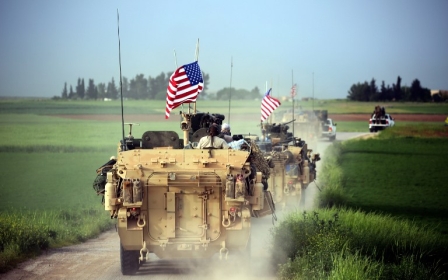US-backed forces enter western Raqqa

A US-backed alliance broke into the western part of the Islamic State's stronghold Raqqa on Saturday, the force and a monitor said, opening up a second front inside the Syrian city.
Backed by US-led coalition air strikes, the Syrian Democratic Forces have spent months tightening the noose on IS-held Raqqa and entered the city for the first time earlier this week from the east.
The move came as Syrian pro-government forces said they hold more than a fifth of the country's strategic desert, after reaching the eastern border with Iraq for the first time since 2015.
The desert, known as the "Badiya", extends over some 90,000 square kilometres (35,000 square miles) from central Syria to the borders with Iraq and Jordan to the east and southeast.
On Saturday, SDF forces pierced into Raqqa from the west, according to the UK-based Syrian Observatory for Human Rights.
"The SDF captured the western half of the al-Sabahiya neighborhood and were reinforcing their positions there," Observatory head Rami Abdel Rahman said.
"They then advanced north to the adjacent district of al-Romaniya and are fighting IS there," he told AFP.
A statement from the SDF's Operation Wrath of the Euphrates said the fighters stormed al-Romaniya on Saturday and were locked "in fierce fighting inside the district".
Held by IS since 2014, Raqqa emerged as a key hub for IS operations in Syria, neighbouring Iraq and beyond.
The SDF, an Arab-Kurdish alliance formed in 2015, started its campaign to capture Raqqa in November and chipped away to the north, west and east.
In addition to controlling al-Sabahiya in Raqqa's west, the alliance also controls the eastern neighbourhood of al-Meshleb, but the force has been struggling to advance further.
The offensive has been backed by the US-led coalition with air strikes, special forces advisers, weapons and equipment.
It comes as SDF forces reached he country's eastern frontier with Iraq for the first time in two years in the Badiya region.
Since 2015, much of the Badiya has been held by the IS, but Syria's army has been chipping away at it for months.
"In cooperation with our allies, our units have captured a large number of locations and strategic positions in the Badiya, amounting to an area of 20,000 square kilometres," the general command of the army said on Saturday.
"This important achievement represents a strategic shift in the fight against terrorism and a launching pad to broaden military operations in the Badiya and along the borders with Iraq," said the statement, distributed on state media.
The army had thus completed the "first phase" of its Badiya operations, the statement said.
State news agency SANA had reported on Friday that army units set up positions northeast of the At-Tanaf garrison, currently used by the US-led coalition bombing IS to train Syrian rebels to fight the jihadists.
The coalition has established a "de-confliction" zone extending 55 kilometres (34 miles) from the garrison, in which pro-regime and allied Russian forces are not supposed to operate.
The US-led alliance has in recent weeks conducted three strikes against pro-regime forces it deemed to be threatening At-Tanaf.
On Thursday, a US jet shot down a pro-regime combat drone that fired what turned out to be a dud bomb at US-led coalition forces close to At-Tanaf.
Syria's army on Saturday accused the coalition of carrying out the bombing raids in an attempt to slow the regime's fight against IS.
"We once again warn of the dangers of repeated attacks by the so-called international coalition and its attempts to obstruct the advances of the Syrian army and its allies," the command said.
Syria's conflict erupted in March 2011 with protests against the rule of President Bashar al-Assad.
It has since evolved into a complex, multi-front war that has drawn in international powers and left more than 320,000 people dead.
Stay informed with MEE's newsletters
Sign up to get the latest alerts, insights and analysis, starting with Turkey Unpacked
Middle East Eye delivers independent and unrivalled coverage and analysis of the Middle East, North Africa and beyond. To learn more about republishing this content and the associated fees, please fill out this form. More about MEE can be found here.




